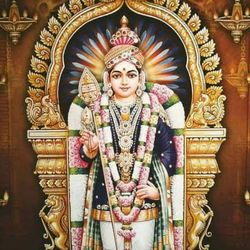

In South India, the name Veerappan has come to represent fame. Veerappan is well-known to most Malayalis, but for those who don't, he was the uncrowned bandit king of the jungles that stretched throughout the states of Kerala, Karnataka, and Tamil Nadu. Veerappan's tale includes everything from smuggling, kidnapping, and murder to romance and a Robin Hood-like character. Let's look at some fascinating Veerappan facts.
His full name was Koose Munisamy Veerappan Gounder, also known as Veeraiah by the Gopinatham locals. His birth year was 1952. He had two children, Vidya and Prabha, after being married in 1990.
Veerappan's journey into crime began when, at the age of 14—or 10, depending on who you ask—he poached his first elephant with the help of his relative Saalvai Gounder. He committed his first murder at age 17. Veerappan's activities got progressively bloodier after this. He killed well over 180 individuals because he killed anyone he saw as a threat. This includes the horrific Palar blast, which claimed the lives of 22 people from a 41-person squad sent to look into a murder he perpetrated in Mettur, Tamil Nadu.
Veerappan is thought to have assisted locals.
It is a known truth that Veerappan assisted the underprivileged peasants living in the woodlands. Whether he had the intention to perform them additionally, several people believed Veerappan was a hero and the police were the bad guys. Some of them even held the opinion that he was a political benefactor who later turned against him as he gained power. Does it sound like you? most anti-hero tropes' main plot!
It is easy to assume that Veerappan utterly despised the police because more than half of his 180+ kill total were police officers. The editor of Nakkeeran, R Gopal, who conducted the initial interview with him, reported that Veerappan frequently referred to the police as "demons" and maintained that they used the manhunt to commit violence on the helpless people. The Guardian ironically welcomed his death in 2004 as the "Death of a Demon." Veerappan's assassination carried a roughly $15 crore bounty at one stage. In a contentious confrontation known as Operation Cocoon, the Tamil Nadu Special Task Force murdered him. Many years later, people are still debating whether Veerappan himself, despite having a reputation as a Robin Hood figure with a horrendously violent past, or the police who were alleged to have mistreated tribal villagers, were the demons.
Veerappan was a skilled kidnapper in addition to being a bandit.
Ransoms for the VIPs he kidnapped represented some of his biggest financial gains. Rajkumar, a Kannada actor, was his most famous kidnap victim. In July 2000, the bandit captured him, and he was held captive for more than 108 days. Although the 72-year-old actor insisted that he was treated like a brother, it is questionable whether he felt that way. He was given back after Veerappan was supposedly paid a ransom of 20 crores, although the circumstances behind Rajkumar's release remain unknown. Even a novel, Veerappan's Prize Catch: Rajkumar by C. Dinakar, was written about this occurrence. Veerappan also kidnapped retired agricultural minister Nagappa, which was a well-known kidnapping. Nagappa's ordeal did not turn up well because he was discovered dead three months after it began. Veerappan, though, denied murdering the man.
When Veerappan first encountered Muthulakshmi, the 16-year-old who would eventually become the bandit's bride, he was 29 years old. Muthulakshmi claimed in an interview with The Business Standard that Veerappan had approached her with a marriage proposal. After only one passionate exchange, Muthulakshmi was smitten by Veerappan's bad-boy persona and recognisable moustache. The couple have two children, Vidya and Prabha, after being married in 1990. Conflicting information exists regarding a third daughter as well. Some reports claim that the child passed away in a shootout right before Muthulakshmi's 1993 arrest, while others assert that Veerappan strangled the child because he didn't want a third girl child. Vidya Rani, 29, made headlines early in 2017 when she joined the Bharatiya Janata Party. On the other hand, Muthulakshmi maintains her own tribal welfare organisations while living apart from Vidya. She has even run for office, albeit unsuccessfully.
Veerappan was a skilled forager with a remarkable sixth sense. His fortunate escapes are as storied as the guy himself. He was renowned for having a thorough understanding of the forest's motions. He could find ways to cover distances that other people needed days to do in hours since the forest was genuinely his domain. R Gopal also claimed that long before the police arrived, he used bird and animal movement patterns to assess to spot human activities in the jungle.
Veerappan's fabled treasure
Without a concealed cache of money, no respectable bandit is worth his name. Veerappan is said to have around 150 crores in wealth. Many people assert that he gave his money to the villagers who assisted him. The remainder of the money is thought to be hidden somewhere in Veerappan's forested domains. It's also noteworthy to note that Tamil Nadu and Karnataka spent a combined $100 crores to find Veerappan.
Al Capone or Robin Hood? Veerappan, who was he?
a decent man? An evil antagonist? Or was he 'the lesser evil' hiding in the deep, dark forests of South India? It is true that Veerappan frightened the residents of his neighbourhood. He was cruel, allegedly boiling and beheading police officers who attempted to capture him. However, he was also a man whose burial was attended by a large number of people, who is said to have helped villagers resolve disputes, who bargained with governments to secure minority interests.




